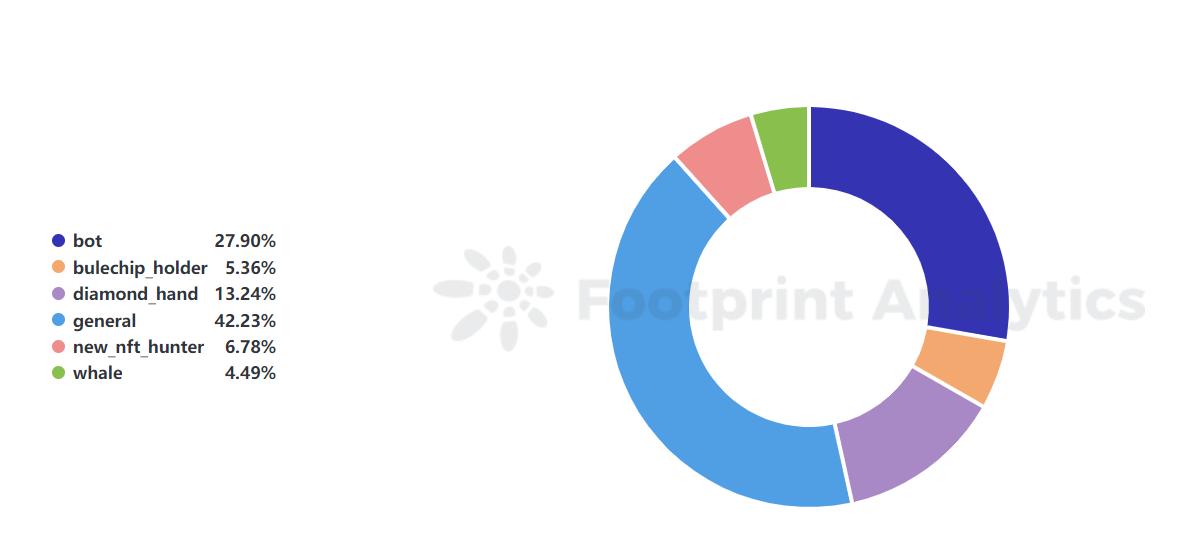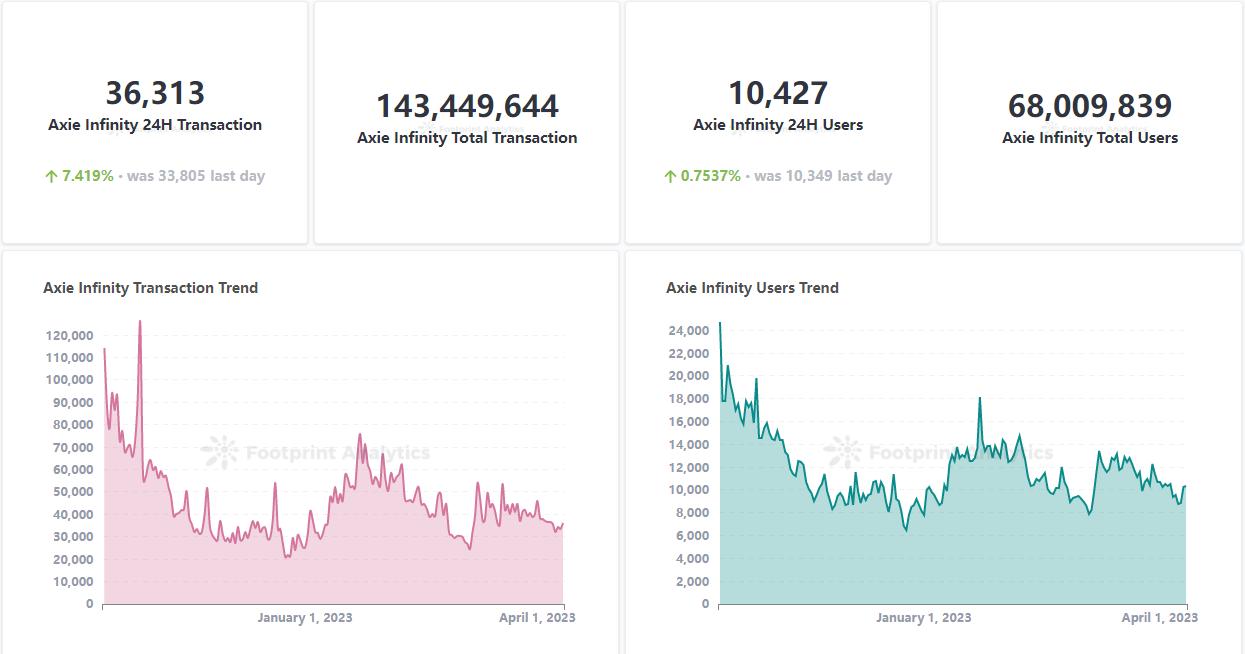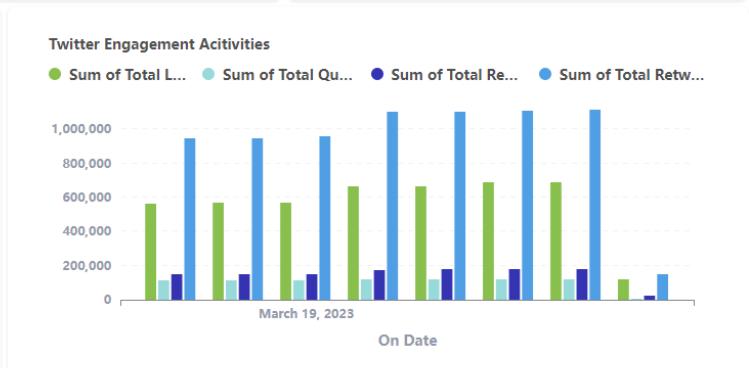Introduction: What are the key indicators to focus on?
The key indicators that need to be tracked during the development and operation of blockchain games include Red Pavilion encryption market data, user data related to DAU, MAU and user retention, social media participation data, and ecosystem-related data such as in-game assets.
The main points:
The GameFi project is different from traditional games. In order to continue to operate, it is necessary to maintain the digital assets in the game and the stability of the game ecosystem.
GameFi's data analysis can help blockchain games analyze market trends and make correct decisions.
Tracking key metrics such as active users, retention, and revenue-related data enables DevOps to make informed decisions about the future direction and economics of their games.
The core of project data analysis is to understand users or customers.
For blockchain games, this is a challenge. Traditional games have players, while GameFi has degen traders, institutional investors, robots, real users, etc. They all connect wallets to the game to operate in the same way, and it is difficult to distinguish carefully.
And in traditional games, the price does not directly affect the quality of the game. It doesn't matter how much you spend on GameStop or Steam, a game is a game. And the cost and volatility of NFTs or game tokens can significantly affect the type of players a game attracts. Maintaining price stability or appreciation is as important to the sustainability of the project as the quality of the game. In fact, under the current GameFi project operation mode, game quality is an important means to achieve stable prices.
All of these characteristics make GameFi data analysis a multi-faceted practice, combining data dimensions such as economics, in-game activities, and marketing campaigns to achieve a dynamically changing goal.
Despite the bear market, developers are still struggling to survive. But once the market picks up, the prospects for the Game industry are actually great. Now is the time to start delving into the basics of GameFi analytics.
What is GameFi?
GameFi, also known as blockchain gaming, is one of the most exciting areas in Web3. Included in GameFi are economic incentives for players, also known as Play to Earn (P2E).
Typically, the circulation and ups and downs of in-game assets such as cryptocurrencies or NFTs can provide benefits to players. They can also move their assets outside of the game to be traded on exchanges and NFT markets. Players can earn these rewards by playing games, a process that relies on a complex ecosystem that needs to be designed and operated by game developers. In order for the game development and operation to run smoothly, monitoring specific data indicators is the key to a healthy game ecosystem.
The analysis and comparison system of other blockchain fields such as DeFi, but the data analysis of GameFi is not yet mature. In the development and operation of the GameFi project, challenges such as user acquisition, retention, activation, and benefit distribution still exist, which need to be continuously improved with the help of data analysis.
In this article, we will focus on how to use data to optimize the design and operation of blockchain games.
GameFi Analytics Overview
In order to analyze and understand the GameFi ecosystem, we need to divide the data we need into on-chain data and off-chain data.
On-chain data refers to all publicly available information recorded on the blockchain, such as user addresses, transactions, wallet balances, and smart contract codes. All information on the chain will leave traces on the blockchain, which cannot be tampered with, is open and transparent, and is recorded in real time. Therefore, on-chain data plays an important role in analyzing market direction and project trends to make informed decisions.
Off-chain data refers to data that is not recorded on the blockchain, such as web page data, app download data, and social media data. Off-chain data is also very important to the GameFi project, because in the current GameFi industry, many user behaviors are generally off-chain. Off-chain data provides a more comprehensive view of metrics such as popularity, engagement, and user experience for GameFi projects.
image description

An example of Footprint Address Tags
Footprint Analytics used machine learning and big data techniques to createMillions of Address Labels, to identify addresses as different identities, such as whales, high-quality gamers, or bots. This is one type of deep data analysis.
GameFi is an emerging industry that faces many challenges in data processing and analysis, and industry players also face many challenges in terms of scarce data sources, difficult data usage, and low data quality.
4 data indicators that game developers and operators should focus on
Indicator 1: Macro crypto market data to support launching and growing games.
Macro encryption market data refers to data such as the market value of the entire industry, total transaction volume, and the overall price trend of tokens.
Market data is important because it can provide insight into the economic health and stability of the industry as a whole. Market data may affect investor confidence and market sentiment, as well as allow developers to make informed decisions at a particular stage.
For example, when choosing a blockchain to deploy for your own GameFi project, there are many factors to consider, such as the number of users of the chain, per capita transaction volume, data capacity, and Gas Fee.
image description

Percentage of the Total Users by Chain
One of the metrics that developers should consider is the number of users on the blockchain. This can indicate the popularity of a particular blockchain, as well as the potential market size for the game. according toFootprint Analytics dataimage description

Axie Infinity Users & Transactions
In addition to the number of players on the chain, another data indicator that developers should consider is the number of transactions per capita. This refers to the proportion of transactions with users on the blockchain. This can reflect the degree of user engagement and the rationality of product and token economic model design.GameFi Project Axie Infinity on EthereumWith over 36,000 daily transactions in April 2023, this is more than 3 transactions per user. This shows that Axie Infinity still has a high user retention rate and a strong ecosystem in this bear market.
Metric 2: User related data helps user acquisition and retention
As more and more Web3 projects emerge, inter-project usersThe competition for attention is getting fiercer。In 2022,There were 717 new GameFi entries launched, but only 14.5% attracted more than 1,000 users. Therefore, it is very important to understand your customers and tag high-quality users to maintain active user count and increase retention rate.
User numbers are very important to the health of the GameFi ecosystem. The number of users also reflects the popularity of the game item among users. However, we also need to focus on the metric of active users. A classic example isControversy over The Sandbox's active user numbers last October(The Sandbox has fewer than 1,000 daily active users, according to DappRadar).
The key is that we should pay attention to the high-quality part of the users, for example, DAU (Daily Active Users) and MAU (Monthly Active Users) are very important indicators that can tell you how many people like to play your game.
In addition to the number of active users, we can also focus on some more user-related data, such as user characteristics and user behavior. These user-related data can help developers attract, retain and activate users, and improve user experience and satisfaction.
As with user counts, tracking user retention for a particular game or on-chain can also give projects greater insight into a game’s sustainability and volatility.
image description


User Retention of STEPN & Walken
Given the similarities between the two games, we find possible explanations:
“New users of WALKEN automatically get CATlete when they open the game for the first time. Then the game starts tracking steps through the user’s mobile phone, and they are automatically rewarded daily. Users only need to click a button to get GEM and go further at their own pace. Enter the game. While Walken’s homepage might seem a little complicated, this approach is far less intrusive than asking users to buy an NFT and then remember to manually incorporate the app into their day-to-day operations.”
It can be seen that user-related data is an important indicator for developers to design games and optimize them.
Indicator 3: Social media data for governance and community development
Although blockchain games are played on-chain, their users still live in the real world and interact with projects and communities on social media. Social media data can reflect the popularity, engagement and visibility of GameFi projects on various social media platforms such as Twitter, Discord, Reddit, etc.
image description

Twitter Engagement Activities
Engagement is a summary of various engagement behaviors such as likes, comments, and retweets, and is used to measure the quality of tweeted content and the engagement of followers. Analyzing engagement-related data can help you identify the most marketing-friendly content types and the best times to post them to improve the effectiveness of your tweets in marketing.
More social media fans means more participation and more users, and there is a certain correlation between the number of users and the price of NFT in the game. For example, Decentraland, a GameFi project on Ethereum, has seen its number of Twitter followers continue to increase in December 2021, and the price of NFTs in the game has also increased by more than 500% since January 2021.
Indicator 4: Ecosystem data is used to monitor and optimize the game ecology.
image description

ootprint Analytics - SEA-BNB Buy Sell Pressure
For example, certain decisions, such as poorly designed game items, may introduce gold diggers and endanger the game's ecosystem. Unlike ordinary players or investors, miners will mint NFTs and use them to play games to earn profits from token sales. The emergence of a large number of gold diggers will lead to sharp fluctuations in asset prices in the game, which will lead to an imbalance in the ecosystem similar to the one shown above.
write at the end
write at the end
Running a game is challenging, and running a game on the blockchain is even more challenging. Developers need to design a complete ecosystem and incorporate the token economy into the game to provide players with a better gaming experience and more rights and benefits.
As you can see from this article, it's important to use data to monitor every aspect of your game. It can help the game have a longer life cycle, a more complete ecosystem and higher revenue. By tracking active users, retention rates, and revenue-related data, developers can make informed decisions about the game itself and its ecosystem design.
“Compared to the time it takes to make a good game, the blockchain gaming space is still in its infancy,” said Robby Yung, CEO of Animoca Brands.
The Footprint Community is a global, mutually supportive data community where members leverage data visualizations to co-create communicable insights. In the Footprint community, you can get help, establish links, and exchange learning and research about blockchains such as Web 3, Metaverse, GameFi, and DeFi. Many active, diverse, and highly engaged members inspire and support each other through the community, and a worldwide user base is built to contribute data, share insights, and drive the community forward.
This article is contributed by the Footprint Analytics community.
The Footprint Community is a global, mutually supportive data community where members leverage data visualizations to co-create communicable insights. In the Footprint community, you can get help, establish links, and exchange learning and research about blockchains such as Web 3, Metaverse, GameFi, and DeFi. Many active, diverse, and highly engaged members inspire and support each other through the community, and a worldwide user base is built to contribute data, share insights, and drive the community forward.
Footprint Website: https://www.footprint.network
Discord: https://discord.gg/3 HYaR 6 USM 7
Twitter: https://twitter.com/Footprint_Data



